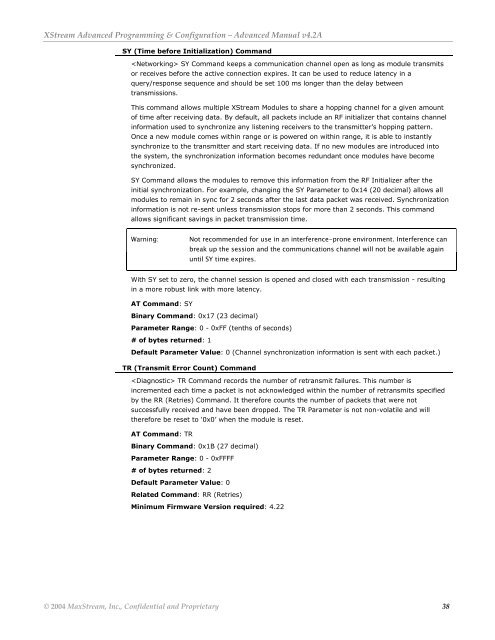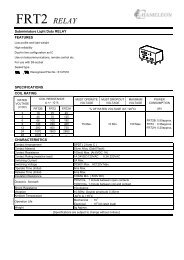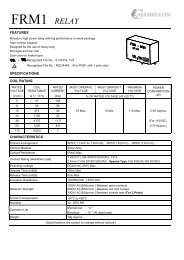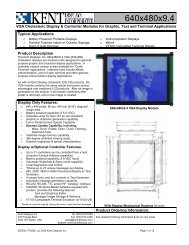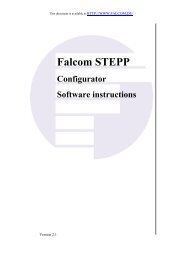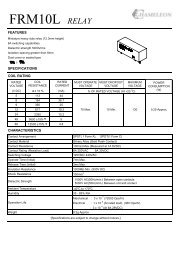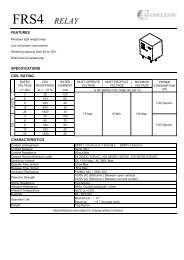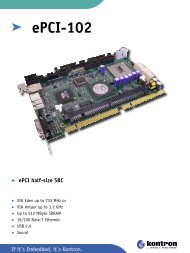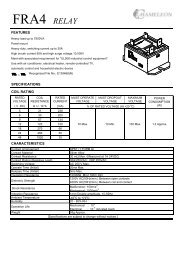XStream⢠Advanced Programming & Configuration
XStream⢠Advanced Programming & Configuration
XStream⢠Advanced Programming & Configuration
Create successful ePaper yourself
Turn your PDF publications into a flip-book with our unique Google optimized e-Paper software.
XStream <strong>Advanced</strong> <strong>Programming</strong> & <strong>Configuration</strong> – <strong>Advanced</strong> Manual v4.2A<br />
SY (Time before Initialization) Command<br />
SY Command keeps a communication channel open as long as module transmits<br />
or receives before the active connection expires. It can be used to reduce latency in a<br />
query/response sequence and should be set 100 ms longer than the delay between<br />
transmissions.<br />
This command allows multiple XStream Modules to share a hopping channel for a given amount<br />
of time after receiving data. By default, all packets include an RF initializer that contains channel<br />
information used to synchronize any listening receivers to the transmitter’s hopping pattern.<br />
Once a new module comes within range or is powered on within range, it is able to instantly<br />
synchronize to the transmitter and start receiving data. If no new modules are introduced into<br />
the system, the synchronization information becomes redundant once modules have become<br />
synchronized.<br />
SY Command allows the modules to remove this information from the RF Initializer after the<br />
initial synchronization. For example, changing the SY Parameter to 0x14 (20 decimal) allows all<br />
modules to remain in sync for 2 seconds after the last data packet was received. Synchronization<br />
information is not re-sent unless transmission stops for more than 2 seconds. This command<br />
allows significant savings in packet transmission time.<br />
Warning:<br />
Not recommended for use in an interference-prone environment. Interference can<br />
break up the session and the communications channel will not be available again<br />
until SY time expires.<br />
With SY set to zero, the channel session is opened and closed with each transmission - resulting<br />
in a more robust link with more latency.<br />
AT Command: SY<br />
Binary Command: 0x17 (23 decimal)<br />
Parameter Range: 0 - 0xFF (tenths of seconds)<br />
# of bytes returned: 1<br />
Default Parameter Value: 0 (Channel synchronization information is sent with each packet.)<br />
TR (Transmit Error Count) Command<br />
TR Command records the number of retransmit failures. This number is<br />
incremented each time a packet is not acknowledged within the number of retransmits specified<br />
by the RR (Retries) Command. It therefore counts the number of packets that were not<br />
successfully received and have been dropped. The TR Parameter is not non-volatile and will<br />
therefore be reset to ‘0x0’ when the module is reset.<br />
AT Command: TR<br />
Binary Command: 0x1B (27 decimal)<br />
Parameter Range: 0 - 0xFFFF<br />
# of bytes returned: 2<br />
Default Parameter Value: 0<br />
Related Command: RR (Retries)<br />
Minimum Firmware Version required: 4.22<br />
© 2004 MaxStream, Inc., Confidential and Proprietary 38


